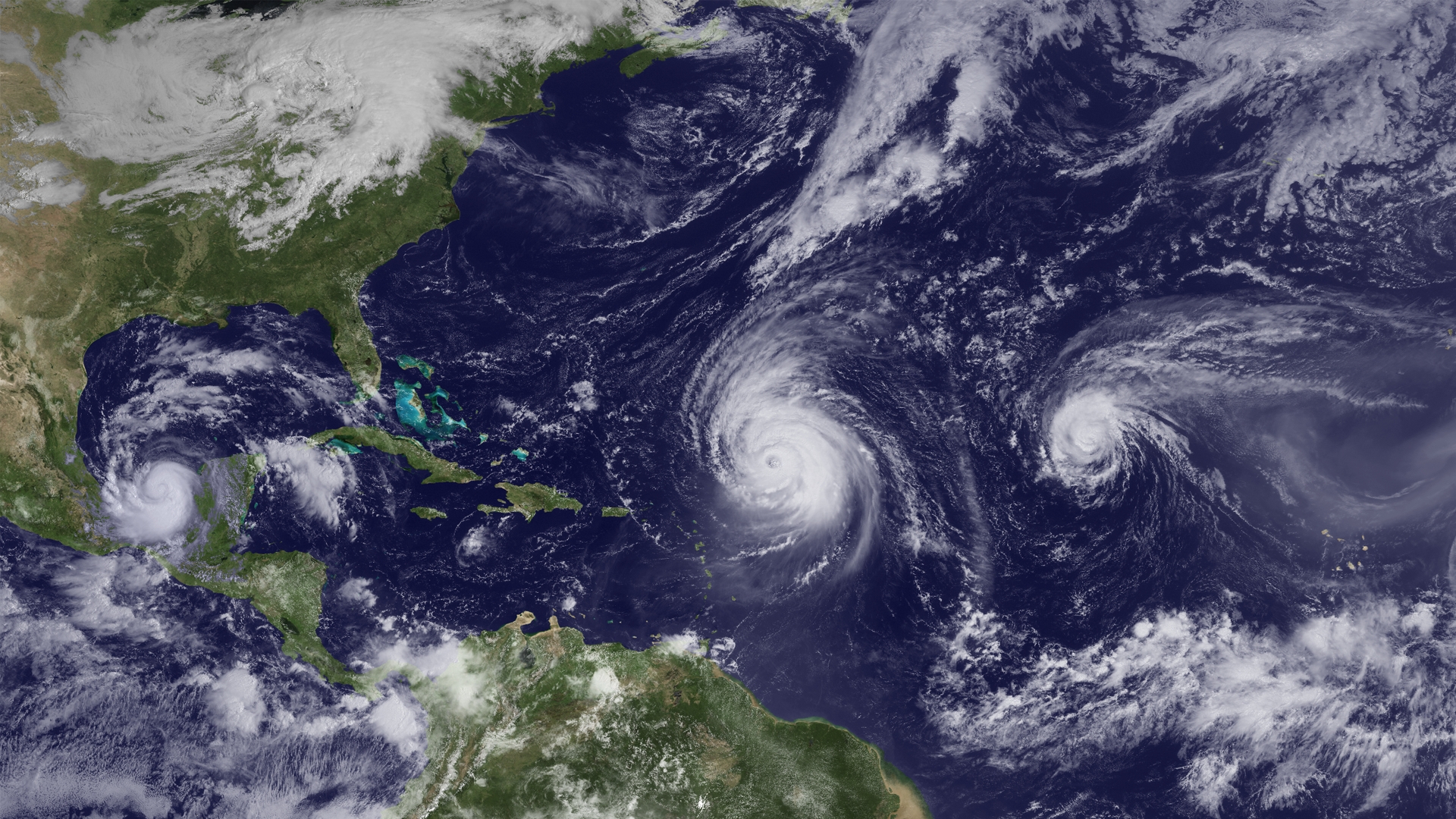
Colorado State University researchers are predicting a well below-average hurricane season for the Atlantic basin in 2015, citing the likely development of a moderate to strong El Niño event as well as anomalous cooling of the tropical and sub-tropical Atlantic.
The CSU Tropical Meteorology Project team is calling for seven named storms during the Atlantic hurricane season, which runs from June 1 to Nov. 30. Of those, researchers expect three to become hurricanes and one to reach major hurricane strength (Saffir/Simpson category 3-4-5) with sustained winds of 111 miles per hour or greater.
The team bases its forecasts on over 60 years of historical data that include Atlantic sea surface temperatures, sea level pressures, vertical wind shear levels (the change in wind direction and speed with height in the atmosphere), El Niño (warming of waters in the central and eastern tropical Pacific), and other factors.
So far, the 2015 season is exhibiting characteristics similar to the 1957, 1987, 1991, 1993 and 2014 hurricane seasons, all of which had below-normal activity, said Phil Klotzbach, lead author of the report.
“The tropical Atlantic has anomalously cooled over the past several months, and the chances of a moderate to strong El Niño event this summer and fall appear to be quite high,” Klotzbach said. “Historical data indicate fewer storms form in these conditions.”
The team predicts that 2015 tropical cyclone activity will be about 45 percent of the average season. By comparison, 2014’s tropical cyclone activity was about 75 percent of average.
The CSU team will issue forecast updates on June 1, July 1 and Aug. 3.
This is the 32nd year that CSU researchers have issued the Atlantic basin season hurricane forecast. William Gray launched the report in 1984.
The CSU forecast is intended to provide a best estimate of activity to be experienced during the upcoming season, not an exact measure.
Klotzbach cautioned coastal residents to take the proper precautions.
“It takes only one landfall event near you to make this an active season,” he said.
The report also includes the probability of major hurricanes making landfall on U.S. soil:
- 28 percent for the entire U.S. coastline (average for the last century is 52 percent)
- 15 percent for the U.S. East Coast including the Florida peninsula (average for the last century is 31 percent)
- 15 percent for the Gulf Coast from the Florida panhandle westward to Brownsville (average for the last century is 30 percent)
- 22 percent for the Caribbean (average for the last century is 42 percent)
The forecast team also tracks the likelihood of tropical storm-force, hurricane-force and major hurricane-force winds occurring at specific locations along the coastal United States, the Caribbean and Central America through its Landfall Probability website.
The site provides information for all coastal states as well as 11 regions and 205 individual counties along the U.S. coastline from Brownsville, Texas, to Eastport, Maine.
Landfall probabilities for regions and counties are adjusted based on the current climate and its projected effects on the upcoming hurricane season.
Klotzbach and Gray update the site regularly with assistance from the GeoGraphics Laboratory at Bridgewater State University in Massachusetts.
Funding for this year’s report has been provided by Interstate Restoration, Ironshore Insurance, Macquarie Group and a grant from the G. Unger Vetlesen Foundation.
EXTENDED RANGE ATLANTIC BASIN HURRICANE FORECAST FOR 2015:
-Released April 9, 2015-
Tropical Cyclone Parameters Extended Range
(1981-2010 Climatological Median Forecast for 2015
in parentheses)
Named Storms (12) 7
Named Storm Days (60.1) 30
Hurricanes (6.5) 3
Hurricane Days (21.3) 10
Major Hurricanes (2.0) 1
Major Hurricane Days (3.9) 0.5
Accumulated Cyclone Energy (92) 40
Net Tropical Cyclone Activity (103%) 45